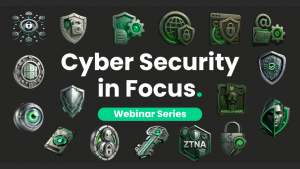Your teams live in the browser. They collaborate there, create there, and increasingly, expose risk there.
That was the central theme of our latest webinar, “Securing the Modern Workspace: Why the Browser is the New Front for GenAI, Data Leakage, and SaaS Security,” where we were joined by Eyal Arazi, Head of Product Marketing at LayerX.
In case you missed it, catch up on the recording below and read our summary to understand why this conversation is more important than ever.
The Browser Has Changed, And So Have the Risks.
Most employees no longer rely on desktop software. Instead, they work in platforms like Google Workspace, Microsoft 365, Salesforce, monday.com, and dozens of SaaS tools, all accessed through a browser. Add to that the growing use of browser-based GenAI tools, and you start to see just how much sensitive activity now flows through that single window.
Yet many organisations still treat the browser as just a gateway, not a workspace in its own right. That gap between reality and security posture is exactly where risk grows.
Visibility and Control Are Falling Behind.
Eyal laid out how traditional security tools, like SSE, CASB, and endpoint DLP, are struggling to keep up. They often don’t see what’s happening inside the browser session, especially when it involves SaaS tools or personal logins.
That’s a problem. Whether it’s data being shared with GenAI tools, users logging into SaaS platforms with unmanaged accounts, or risky browser extensions accessing sensitive information, these activities aren’t always captured or controlled by legacy systems.
For enterprises trying to reduce risk, that lack of visibility is a serious blind spot.
GenAI Usage Is Accelerating the Challenge.
A big focus of the discussion was on how GenAI is changing the threat landscape. Employees are turning to tools like ChatGPT, Copilot, and Gemini to support their day-to-day work. Most of these tools are browser-based, and in many cases, users are accessing them through personal accounts.
That shift introduces several challenges. First, there’s the risk of sensitive company data being entered into AI tools without proper oversight. Secondly, identity fragmentation becomes a concern, as organisations lose the ability to enforce policies when they can’t control how these tools are accessed.
It’s not just about blocking AI tools. It’s about being able to see what’s being used, how, and by whom. That’s what modern browser security enables.
Introducing a Browser, Native Approach to Security.
LayerX, the solution Eyal presented, takes a different approach. It operates directly within the browser, using an enterprise-grade extension that the organisation deploys centrally. This gives security teams direct visibility into browser activity and the ability to enforce policies in real-time.
Because it operates at the browser layer, LayerX can monitor and control activities like uploads, downloads, copy-paste actions, and even AI chats, whether they take place in a web app or a desktop-installed version running as a progressive web app.
The demo showed how quickly teams can create policies to prevent specific behaviours, like sharing personally identifiable information with AI tools. Teams can tailor these policies to users, applications, or risk types, gaining fine-grained control without disrupting productivity.
Why This Matters Now?
The core message of the webinar was clear: browsers have become the new workspace, and with that shift, they’ve also emerged as a critical attack surface. As a result, enterprises can no longer afford to overlook them.
The organisation’s size or existing security investments may influence your approach, but they’re less significant when it comes to deciding when to act. If your users are working in the browser, and they almost certainly are, then it’s time to make browser security part of your strategy.
Secon’s View.
At Secon, we help organisations take a practical, human-centred approach to security. That means focusing on the areas where real work is happening, not just where legacy tools are comfortable operating.
Browser security for enterprises isn’t about locking things down. It’s about enabling people to work safely in the tools they already rely on, SaaS platforms, AI assistants, and everything in between.
We’re proud to partner with LayerX to help our clients take on this challenge head-on. If you’d like to explore browser security in more detail, get in touch, we’d love to help you take the next step.


